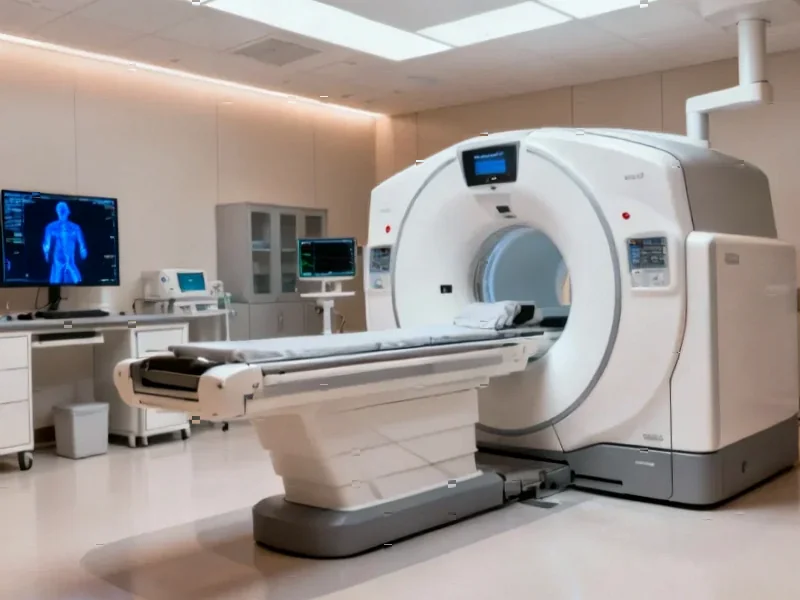According to Forbes, generative AI could save hundreds of thousands of lives and make healthcare affordable while restoring satisfaction to clinical practice. The analysis highlights that U.S. healthcare costs exceed $14,000 per person annually, with employer health-insurance premiums projected to rise 9% in January to approach $30,000 for a family of four. Meanwhile, ACA marketplace plans could jump 30% as premium tax credits expire, and new Medicaid restrictions in 2026 could cause up to 12 million people to lose coverage. The article identifies five key areas where generative AI could transform medicine, including real-time medical literature analysis, chronic disease management through wearables, closing the “knowing-doing” gap in patient safety, continuous monitoring replacing routine checks, and analyzing the 97% of hospital data that currently goes unused. This comprehensive analysis suggests we’re approaching a pivotal moment for healthcare transformation.
The Coming Market Disruption
The healthcare AI market is positioned for explosive growth, but the distribution of value will be uneven across the ecosystem. Traditional healthcare providers who fail to adapt to AI-enhanced care models risk becoming obsolete, while technology companies that successfully integrate with clinical workflows stand to capture significant market share. The $1.5 trillion in potential annual savings represents both a massive efficiency opportunity and a substantial redistribution of healthcare spending. Investors should watch for companies developing ambient listening tools, AI-powered diagnostic systems, and integrated platforms that connect wearable data with clinical decision support.
The Chronic Disease Management Gold Rush
With 60% of Americans living with at least one chronic disease and 42% having two or more, the market for AI-powered chronic care management represents one of the most immediate opportunities. The CDC’s estimate that better chronic disease control could cut heart attacks, strokes, cancers and kidney failures by up to 50% creates enormous economic incentive for payers and providers to adopt these technologies. Companies developing AI systems that can detect fluid buildup in heart failure patients days before emergency situations will particularly benefit, as they address one of the most costly conditions in healthcare. The shift from quarterly check-ins to continuous monitoring represents a fundamental business model change that will create winners and losers across the healthcare value chain.
The Data Utilization Revolution
The revelation that hospitals use only 3% of the data they generate represents both a staggering inefficiency and massive opportunity. As Microsoft’s analysis indicates, the typical hospital generates about a terabyte of data annually from bedside monitors alone. Companies that can effectively mine this data gold mine through generative AI will create enormous value. The ability to analyze millions of real-world clinician-patient conversations alongside electronic health records and outcomes data will fundamentally change how medical evidence is generated. This could disrupt the traditional clinical trial model and create new pathways for treatment optimization that bypass conventional research timelines.
Implementation Challenges and Market Timing
While the potential is enormous, the path to widespread adoption faces significant hurdles. Regulatory approval for AI-driven diagnostic and treatment recommendations will require robust validation, and healthcare systems must overcome interoperability challenges between legacy systems and new AI platforms. The current adoption rate of over 60% among clinicians using genAI regularly suggests the technology is crossing the chasm from early adopters to mainstream users. However, integration with surgical robotics and complex clinical workflows, as highlighted in surgical AI applications, will require careful implementation to avoid disrupting delicate clinical processes.
Investment Implications and Sector Impact
The generative AI revolution in healthcare will create ripple effects across multiple sectors. Traditional medical device companies face disruption from AI-enhanced competitors, while health insurers stand to benefit from reduced claims through better preventive care. The projected 30% premium increases in ACA marketplace plans create additional pressure for cost-saving innovations. Companies that can demonstrate clear ROI through reduced hospitalizations and improved outcomes will capture market share rapidly. However, the transition period will be messy, with legacy healthcare providers struggling to adapt their business models while new entrants disrupt traditional care delivery patterns.




